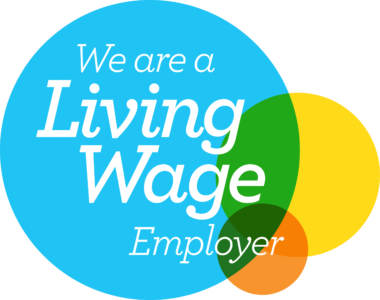- EES/ETIAS update
Already covered in last month’s immigration update, this is a reminder that the European Union’s (EU) Entry/Exit System (EES) will go live on 12 October 2025. From this date onwards, the EES will be rolled out at the external borders of the 29 European countries which are part of the Schengen Area. The rollout is scheduled to take six months.
The EES is an advanced IT system that will digitally record entries and exits of non-European Union (EU) nationals travelling to participating countries for short stays. It will register biometric data such as fingerprints, facial images, and other travel information.
The system has been designed to prevent irregular immigration, identify overstayers, and reduce identity fraud. The system is expected to enable national authorities to identify individuals posing a security threat before they enter the EU.
British nationals travelling to the EU will need to enrol in the EES upon entry at the EU border (this will take place within the airport on arrival) and start tracking their time spent there much more closely than has previously been the case. The EES will identify travellers who have spent their permitted 90 days in any rolling 180-day period within the Schengen Area. Those travellers in excess will not be admitted, and overstayers beyond 90 days are likely to be subject to future entry bans of two years or more.
It is also expected that the EU’s other flagship security measure, the European Travel Information and Authorisation System (ETIAS) will now go live in the last quarter of 2026. ETIAS will require nationals from 59 visa-exempt countries and territories to obtain travel permission to enter 30 European countries for a short stay.
It is important that individuals travelling from the UK into the EU are aware of the restrictions and requirements which will be implemented in the next few months to avoid being turned away at the EU border or prevented from boarding a plane or ferry in the first place.
- British nationals can soon register for the EasyPASS border crossing system in Germany
From 25 August 2025, British nationals will be able to register for the so-called EasyPASS-RTP, which will allow them to make use of Germany’s semi-automated border control system.
Travellers who have registered with the EasyPASS system before 12 October 2025 (when the EES system goes live across the Schengen Area) will need to re-register with the German system after that date to ensure their data is also captured on the EES.
The EasyPASS system requires a valid electronic passport, which will be read at the border. At the same time, a photo of the traveller will be taken. German nationals can also use their electronic ID cards.
Currently, EasyPASS is available at the following airports: Frankfurt am Main, Munich, Cologne/Bonn, Düsseldorf, Berlin Brandenburg, Stuttgart, Hanover and Hamburg. Registration for the EasyPASS is currently only available at the service offices of the German Federal Police at EasyPASS locations. It can generally be completed without an appointment during opening hours.
Frequent travellers between the United Kingdom (UK) and Germany may wish to take advantage of this new, more automated process, which should shorten the time they would otherwise have spent in queues for manual passport checks.
- New Home Office statistics show record numbers of sponsor licence revocations
The Home Office is continuing to crack down on sponsor non-compliance. Businesses that are holding a sponsor licence to be able to employ workers who require a work visa should ensure that their HR and immigration processes comply with all sponsor duties, and that all employees/managers involved in managing sponsored workers and checking rights to work are up to date on their responsibilities and the current requirements.
Between July 2024 and June 2025, 1,948 sponsor licences were revoked, more than double the number in the year July 2023 to June 2024 (937). Compliance failures, such as incomplete record-keeping, failure to pay the correct salary, deficient HR and immigration policies and procedures, and late/no reporting of changes to the sponsored employee or the sponsor organisation itself, tend to be the main issues.
It is not just existing sponsor licence holders who are under increased scrutiny from the Home Office. New sponsor licence applications also appear to be reviewed much more stringently than in the past, with around 44% of all applications being refused in the year ending June 2025. Reasons range from not having the correct HR systems in place, the Authorising Officer not being able to articulate their business case in a pre-licence audit, and the business not showing sufficient funds in their bank account to be able to run the business, amongst a number of others.
It is very important that businesses that already hold a sponsor licence are clear on their responsibilities and consider if they would be in a position to pass a Home Office audit if it happened tomorrow. Those who are in the process of applying for a sponsor licence should ensure that they work closely with their immigration provider to pre-empt any issues the Home Office could raise.
- UK introduces new visa processing time checking tool
UK visa applicants can now check the estimated processing time for their application using a new online service on the Home Office’s GOV.UK website (https://www.gov.uk/check-visa-processing-time).
The online service covers a number of visa categories, such as work and study, visitor and tourist visas, business-related travel, personal visas for marriage or civil partnerships, and medical treatment, as well as transit arrangements for those passing through the UK to other destinations.
To use the service, applicants need to provide the date they verified their identity, either via the mobile phone app or via a visit to the visa application centre to give their fingerprints. If the exact date is unknown, an estimate should also work.
The tool should provide clearer information about the UK’s visa processing times, which in turn will assist businesses and individuals to plan their travel and coordinate with their destination contacts more effectively.
- Two immigration statuses are possible if you have pre-settled status
The Home Office has recently introduced guidance for persons in the UK who had pre-settled status under the EU Settlement Scheme (EUSS) and subsequently acquired another type of permission to enter or stay in the UK. The general rule is that the most recently acquired status would be the prevailing one.
However, pre-settled status is retained if the person holds pre-settled status under the EUSS for one of the eligible reasons and then obtains another type of permission to enter or stay in the UK.
The eligible reasons are:
- the person is from the EU, Switzerland, Norway, Iceland or Liechtenstein
- the person is a family member of someone from the EU, Switzerland, Norway, Iceland or Liechtenstein
- the person has a ‘retained right of residence’ - meaning they used to have a family member from the EU, Switzerland, Norway, Iceland or Liechtenstein who was living in the UK by 31 December 2020.
The person’s eVisa account will only display the most recent permission to enter or stay in the UK. They will be able to provide a share code to anyone who needs to check that the person has permission to enter or stay in the UK, such as employers, landlords and banks.
How the person can prove that they still have pre-settled status depends on whether they still have their other type of permission to enter or stay in the UK.
If the person still has their other type of permission to enter or stay in the UK, which is showing on their eVisa account, an employer or landlord can use the Employer Checking Service to confirm their pre-settled status.
Other organisations (such as government departments, councils and educational establishments) can contact the Home Office through their usual process for checking immigration status to confirm the person’s pre-settled status.
If the person no longer has the other permission to enter or stay in the UK (i.e. other than pre-settled status), but they still have pre-settled status, they can contact the Home Office and ask for it to be added to their eVisa account.
The Home Office is still advising holders of pre-settled status to apply for settled status as soon as they are eligible (the rules regarding absences from the UK while a pre-settled status holder were recently relaxed, so it is likely that many more are now eligible to apply who previously were not). Even though there has been a lot of media coverage regarding the Home Office saying it is looking to automatically switch pre-settled status holders to settled status where they have sufficient evidence of them having been in the UK for five years (such as tax records, for example), it is still advisable to obtain the stronger settled status as soon as possible (subject to eligibility requirements being met) and not wait for the automatic switch.
If settled status is granted, it will replace any other permission the person has to enter or stay in the UK.
- Proposed changes to Indefinite Leave to Remain status
Following a week of turbulent news coverage re: various political parties’ proposed approaches to Indefinite Leave to Remain (ILR) status, we are keen to remind clients that there have been no changes to the Immigration Rules in respect of ILR status at this time.
All current valid grants of ILR remain valid, and status holders can travel freely internationally with their eVisa accounts that evidence this visa status.
There is an ongoing government consultation in respect of ILR status, which is considering whether to raise the residence requirement before being eligible to apply from five years of continuous residence to ten years.
Family members of British nationals have already been confirmed as being exempt from any changes that may be forthcoming. Therefore, they will continue to require only five years of residence before qualifying.
Grant of ILR following a visa status in other categories, such as Skilled Worker, Ancestry, Global Talent, etc, is within the scope of the policy reform consultation, but no decision has yet been made. An initial House of Commons debate was held on 8 September, and plans for further consultation are ongoing and expected ‘later this year’.
Despite calls from Reform UK to revoke ILR status for existing status holders (moving them back to a fixed duration visa), there is no indication of any kind that this is being considered by the Government, and it has been widely denounced by many of the major political parties.
The content of this article is for general information only. It is not, and should not be taken as, legal advice. If you require any further information in relation to this article please contact the author in the first instance. Law covered as at September 2025.








